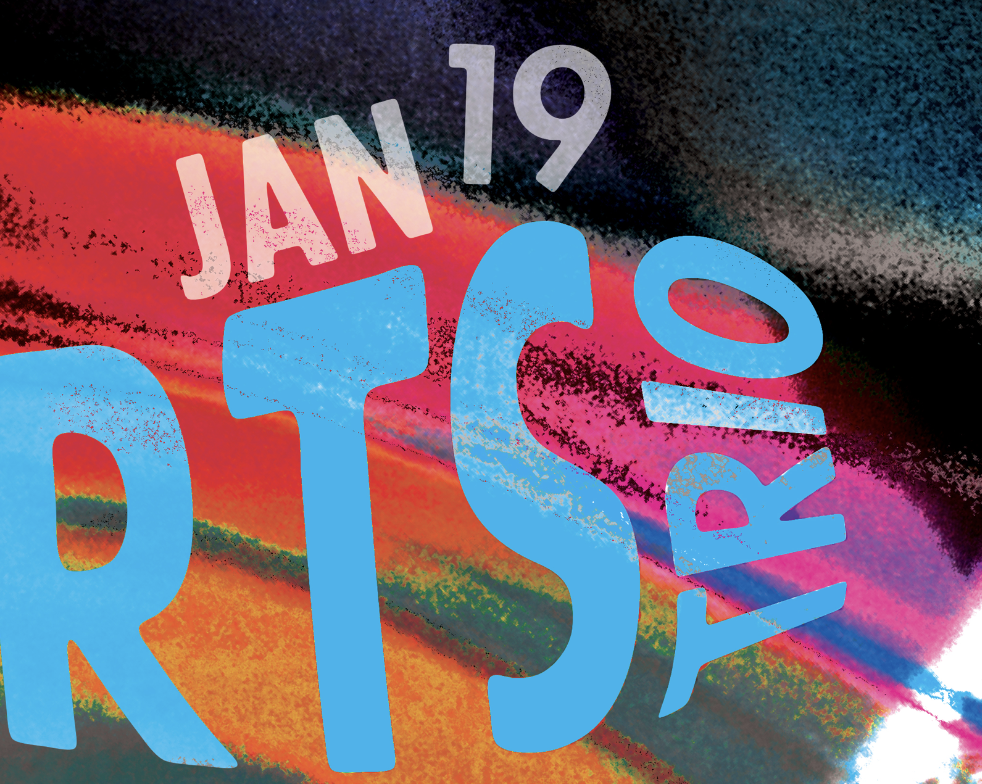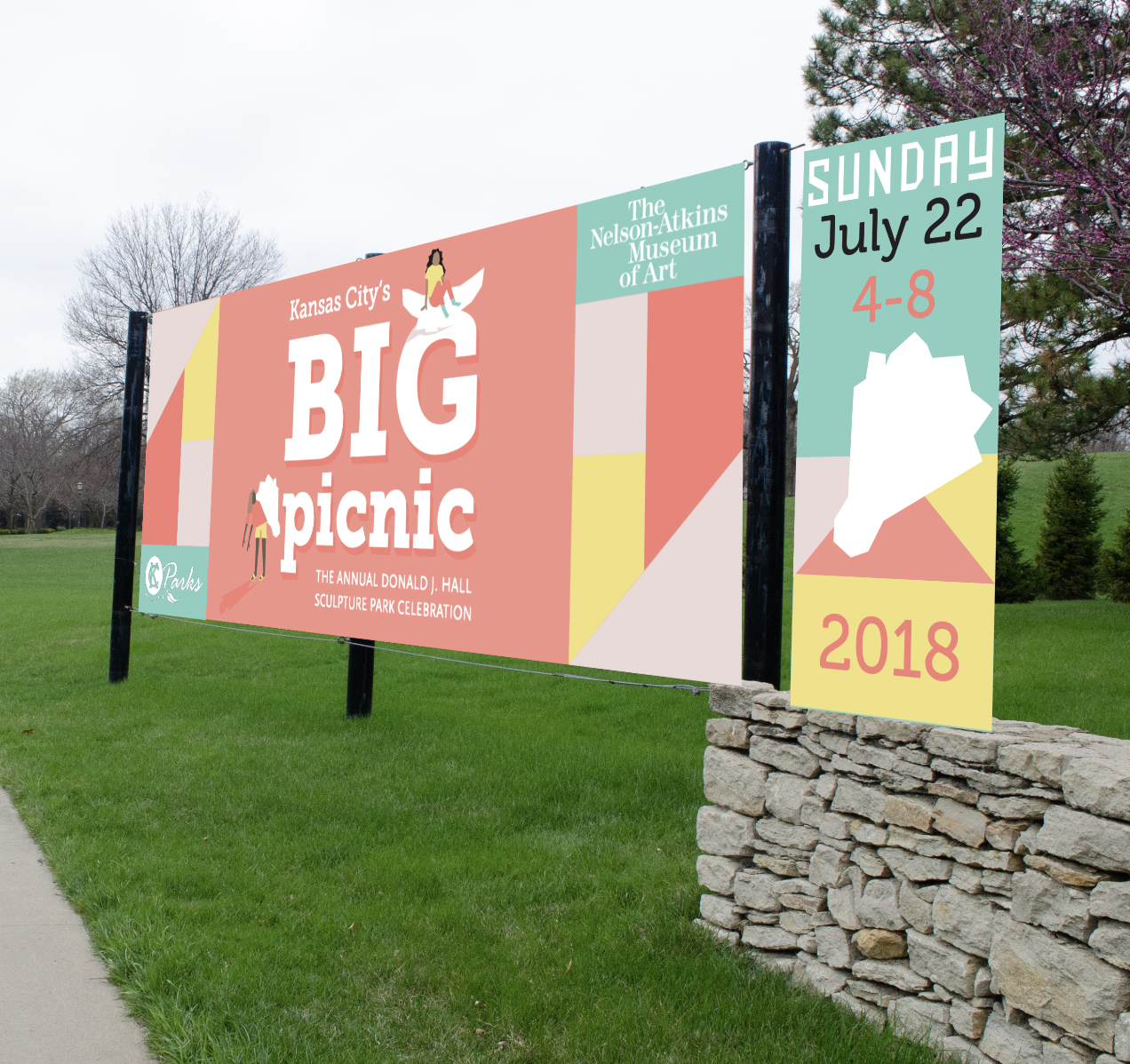This section serves as documentation of my experience in teaching, including hyperlinks to my list of professional development around teaching and student awards and accolades. Below on this page is a listing of the courses I have taught, special projects with students and external partners, and highlights from experiences with students.
List of Courses Taught
SOPHOMORE LEVEL STUDIO COURSES AT KCAI

Kansas City Art Institute
F2021, F2020
COURSE DESCRIPTION
In what ways might typography and language manifest in an artistic practice? This studio elective course begins with a series of workshops focused on the fundamentals and principles of typography. The course offers exposure to artistic practices and inquiries that engage language in space — physical, virtual, digital, material, and augmented spatial constructs. In a proposal-based format, students work with typography at multiple scales. A strong interest in developing work that engages language is encouraged and expected. No prior experience with typography or graphic design courses is required.
In what ways might typography and language manifest in an artistic practice? This studio elective course begins with a series of workshops focused on the fundamentals and principles of typography. The course offers exposure to artistic practices and inquiries that engage language in space — physical, virtual, digital, material, and augmented spatial constructs. In a proposal-based format, students work with typography at multiple scales. A strong interest in developing work that engages language is encouraged and expected. No prior experience with typography or graphic design courses is required.
Kansas City Art Institute
S2022, S2021
COURSE DESCRIPTION
To continue our exploration of the visual power of type & image, we will investigate the wide-ranging possibilities of various formal combinations of text and image to produce meaning that is vital to social and cultural communication systems, issues of composition and hierarchy, simultaneity and sequencing of image & text, together and in isolation, will be addressed through 2d, 3d, and 4d experimentation.
To continue our exploration of the visual power of type & image, we will investigate the wide-ranging possibilities of various formal combinations of text and image to produce meaning that is vital to social and cultural communication systems, issues of composition and hierarchy, simultaneity and sequencing of image & text, together and in isolation, will be addressed through 2d, 3d, and 4d experimentation.
COURSE DESCRIPTION
To continue our exploration of the visual power of type & image, we will investigate the wide-ranging possibilities of various formal combinations of text and image to produce meaning that is vital to social and cultural communication systems, issues of composition and hierarchy, simultaneity and sequencing of image & text, together and in isolation, will be addressed through 2d, 3d, and 4d experimentation.
To continue our exploration of the visual power of type & image, we will investigate the wide-ranging possibilities of various formal combinations of text and image to produce meaning that is vital to social and cultural communication systems, issues of composition and hierarchy, simultaneity and sequencing of image & text, together and in isolation, will be addressed through 2d, 3d, and 4d experimentation.
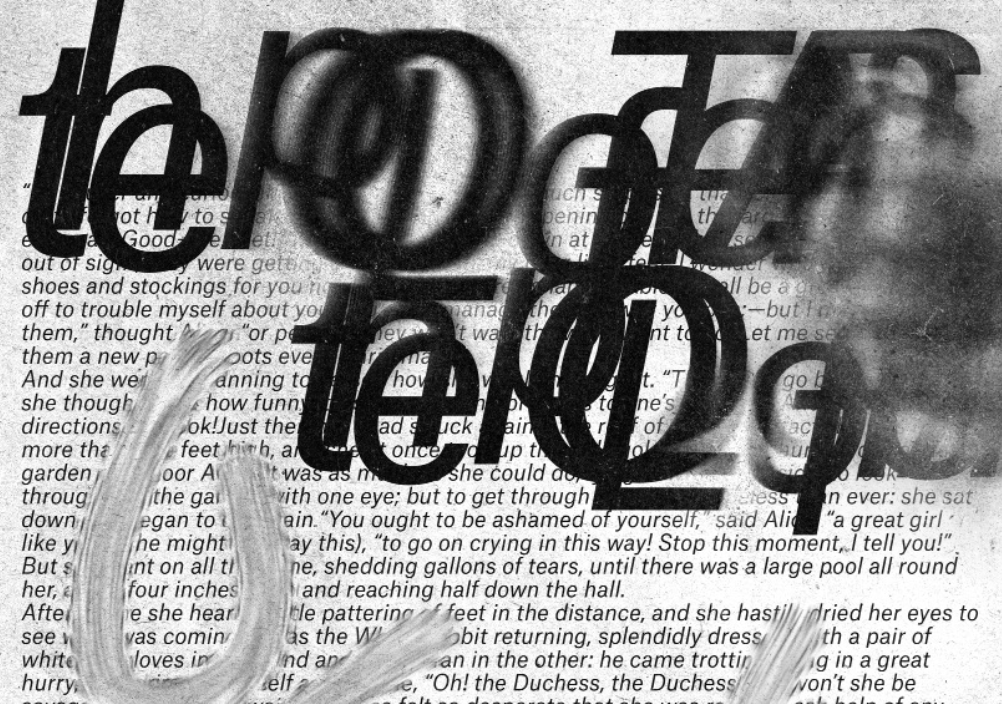
Kansas City Art Institute
S2020, S2019, S2018
COURSE DESCRIPTION
To continue our exploration of the visual power of type & image, we will investigate the wide-ranging possibilities of various formal combinations of text and image to produce meaning that is vital to social and cultural communication systems, issues of composition and hierarchy, simultaneity and sequencing of image & text, together and in isolation, will be addressed through 2d, 3d, and 4d experimentation.
To continue our exploration of the visual power of type & image, we will investigate the wide-ranging possibilities of various formal combinations of text and image to produce meaning that is vital to social and cultural communication systems, issues of composition and hierarchy, simultaneity and sequencing of image & text, together and in isolation, will be addressed through 2d, 3d, and 4d experimentation.

Kansas City Art Institute
F2019, F2018
COURSE DESCRIPTION
In what ways might typography and language manifest in an artistic practice? This studio elective course begins with a series of workshops focused on the fundamentals and principles of typography. The course offers exposure to artistic practices and inquiries that engage language in space — physical, virtual, digital, material, and augmented spatial constructs. In a proposal-based format, students work with typography at multiple scales. A strong interest in developing work that engages language is encouraged and expected. No prior experience with typography or graphic design courses is required.
In what ways might typography and language manifest in an artistic practice? This studio elective course begins with a series of workshops focused on the fundamentals and principles of typography. The course offers exposure to artistic practices and inquiries that engage language in space — physical, virtual, digital, material, and augmented spatial constructs. In a proposal-based format, students work with typography at multiple scales. A strong interest in developing work that engages language is encouraged and expected. No prior experience with typography or graphic design courses is required.
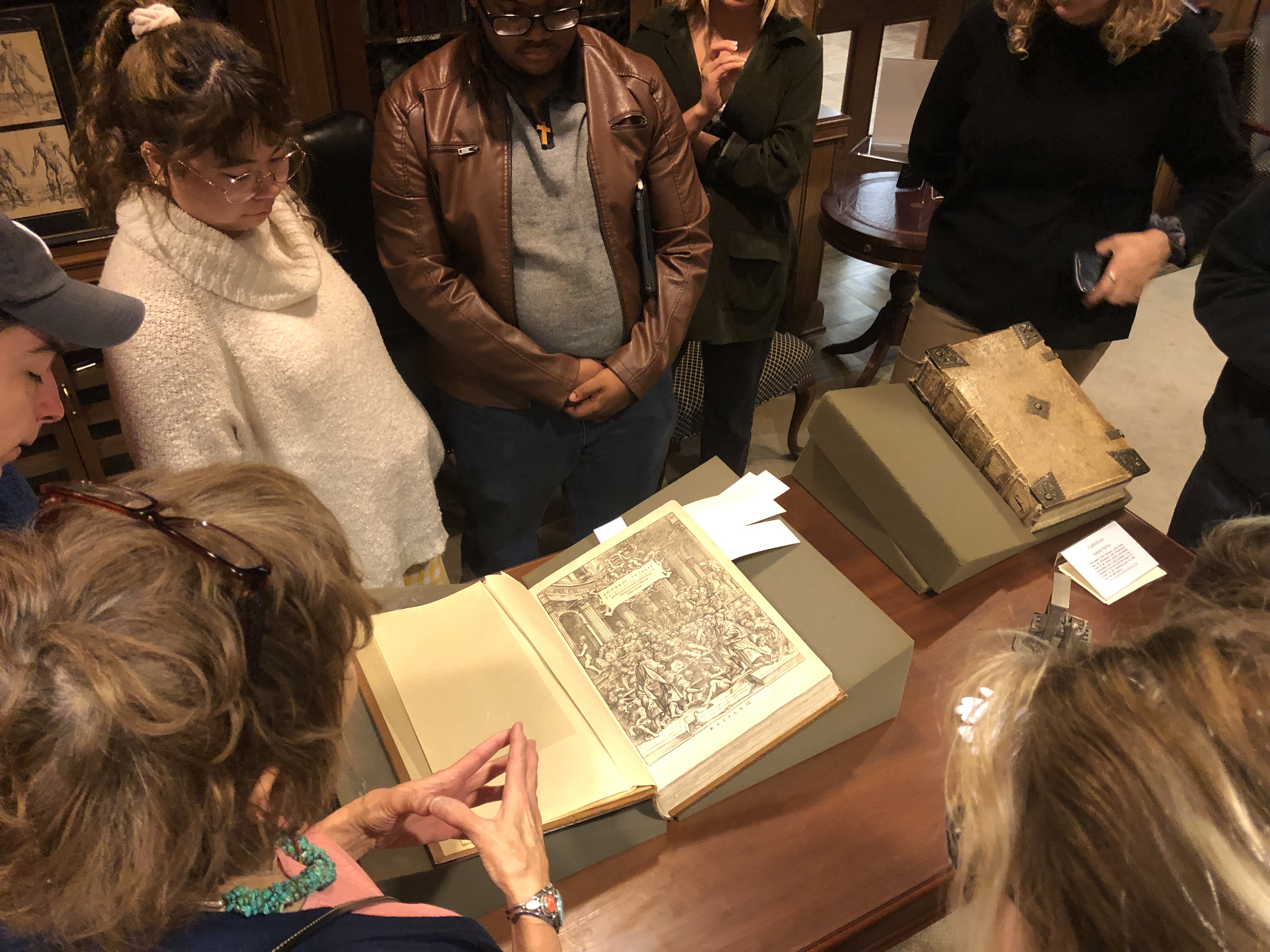
Kansas City Art Institute
F2021, F2020, F2019, F2018
COURSE DESCRIPTION
As critical thinkers and makers, the strongest graphic designers must develop an understanding of visual communication from prehistory to the present as a critical history of social, cultural and technological change. We will examine the history of the written word, production methods, mass communication, and other modes and means of design to study the changing values and ideas around distribution, circulation, literacy, and other activities core to design. Research methodologies establish and reinforce a foundation for independent research and writing. We will engage in group conversations to discuss, activate and share insights and ideas we glean from reading, watching, and listening to a range of relevant sources.
As critical thinkers and makers, the strongest graphic designers must develop an understanding of visual communication from prehistory to the present as a critical history of social, cultural and technological change. We will examine the history of the written word, production methods, mass communication, and other modes and means of design to study the changing values and ideas around distribution, circulation, literacy, and other activities core to design. Research methodologies establish and reinforce a foundation for independent research and writing. We will engage in group conversations to discuss, activate and share insights and ideas we glean from reading, watching, and listening to a range of relevant sources.
JUNIOR/SENIOR LEVEL STUDIO COURSES AT KCAI
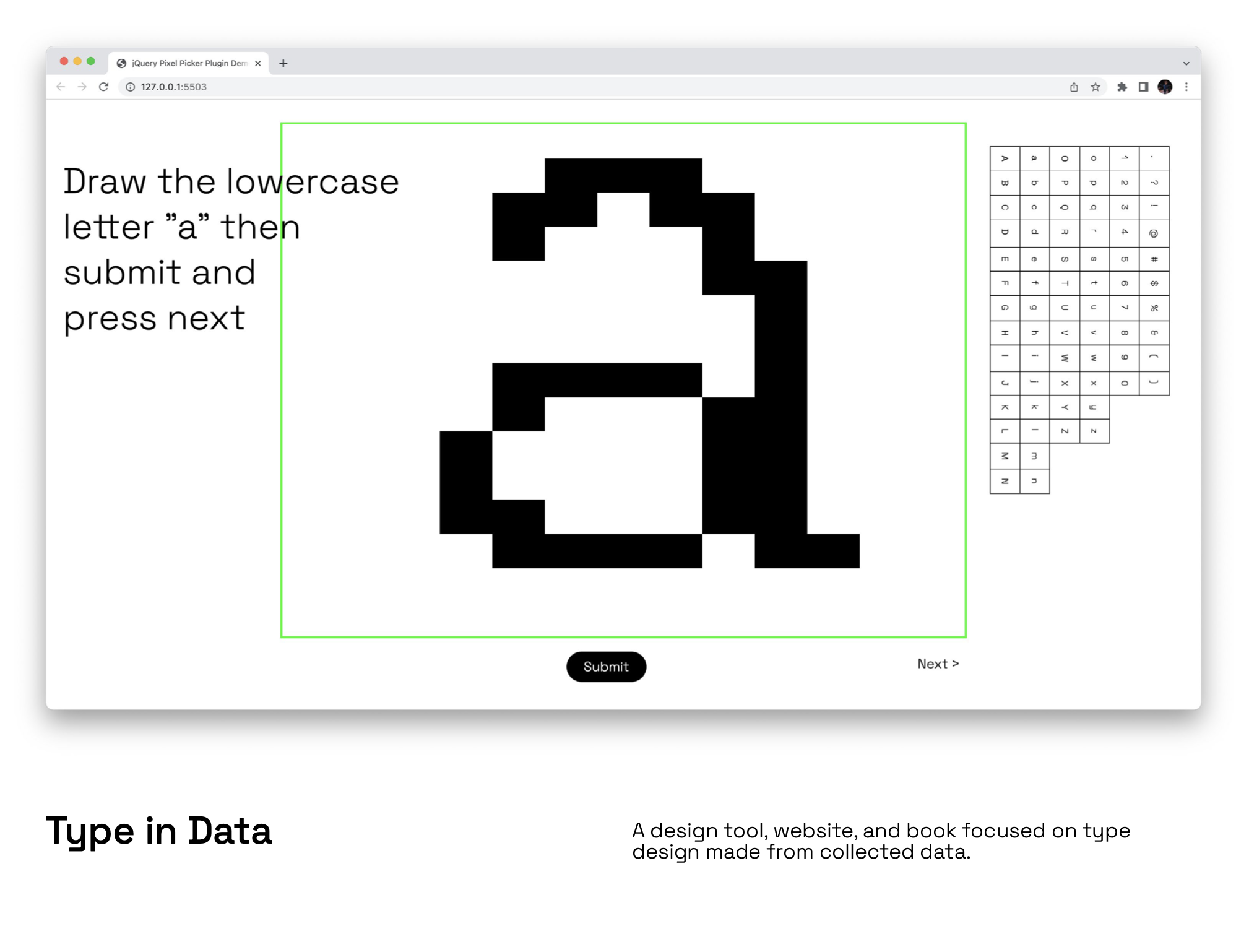
Kansas City Art Institute
SP2022
COURSE DESCRIPTION
An information and attention economy requires that quantitative and qualitative data, news, statistics, processes, and instructions take on clear, understandable, and investigable visual form. This enhances the viewer’s ability to understand and analyze information or accomplish tasks. Together we will immerse ourselves in foundational principles of information design, diagramming and mapping systems and processes, visualization of the concrete and abstract, systems thinking, and consider the ethical issues such as data bias and use/misuse of data. To support and shape our experiences within the studio, we will discuss insights and share ideas we glean from reading, watching, and listening to a range of relevant sources.
An information and attention economy requires that quantitative and qualitative data, news, statistics, processes, and instructions take on clear, understandable, and investigable visual form. This enhances the viewer’s ability to understand and analyze information or accomplish tasks. Together we will immerse ourselves in foundational principles of information design, diagramming and mapping systems and processes, visualization of the concrete and abstract, systems thinking, and consider the ethical issues such as data bias and use/misuse of data. To support and shape our experiences within the studio, we will discuss insights and share ideas we glean from reading, watching, and listening to a range of relevant sources.
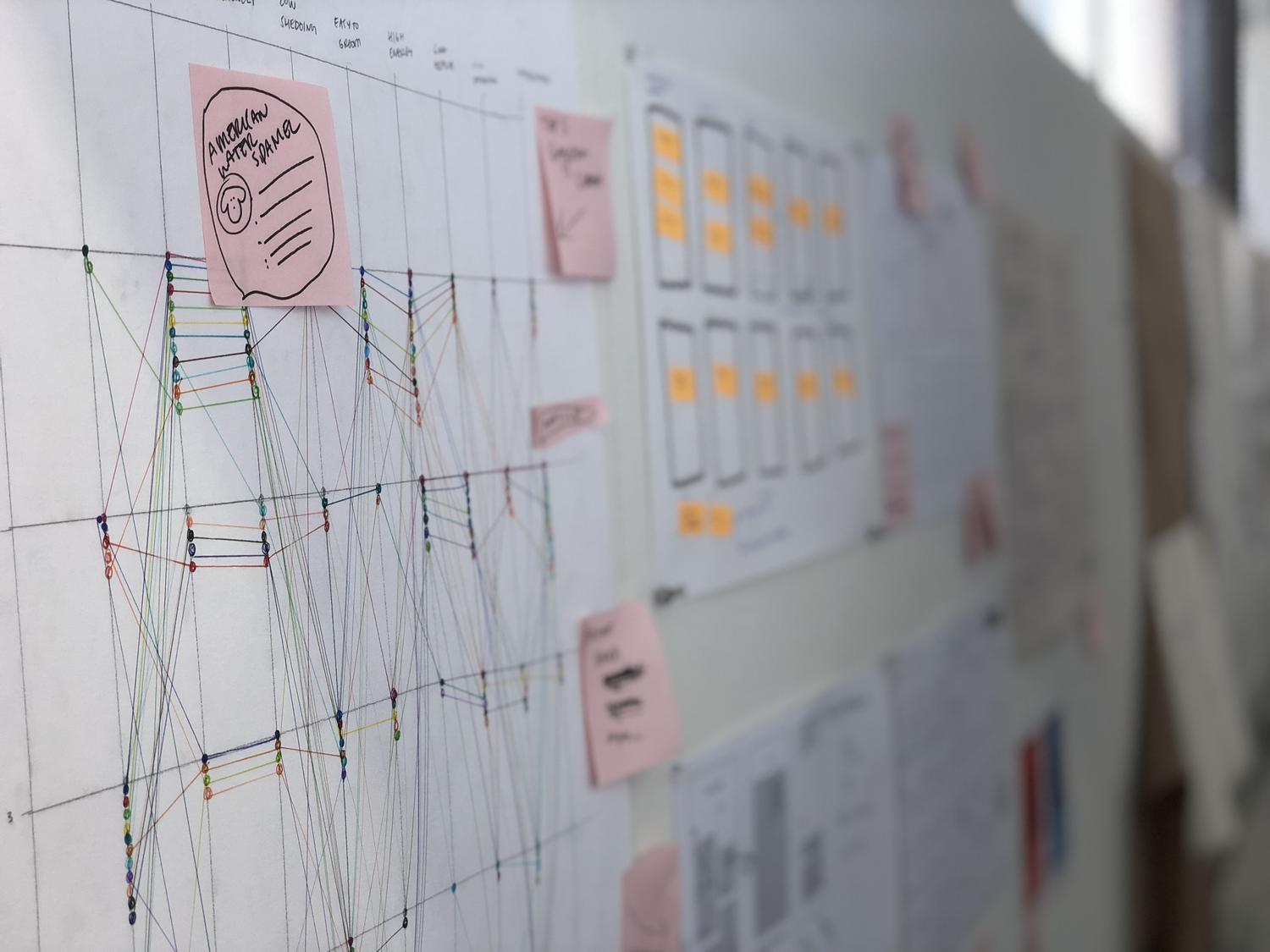
Kansas City Art Institute
S2021, S2020, S2019, S2018
COURSE DESCRIPTION
To continue our exploration of the visual power of type & image, we will investigate the wide-ranging possibilities of various formal combinations of text and image to produce meaning that is vital to social and cultural communication systems, issues of composition and hierarchy, simultaneity and sequencing of image & text, together and in isolation, will be addressed through 2d, 3d, and 4d experimentation.
To continue our exploration of the visual power of type & image, we will investigate the wide-ranging possibilities of various formal combinations of text and image to produce meaning that is vital to social and cultural communication systems, issues of composition and hierarchy, simultaneity and sequencing of image & text, together and in isolation, will be addressed through 2d, 3d, and 4d experimentation.

Kansas City Art Institute
SP2021, SP2019
COURSE DESCRIPTION
The Senior Degree Project will focus on each student’s unique topic and voice, in what will serve as the culmination of the graphic design undergraduate education. The degree project will be addressed both theoretically and practically, through extensive research, writing, visual experimentation, class discussion, personal insight and interest.
The Senior Degree Project will focus on each student’s unique topic and voice, in what will serve as the culmination of the graphic design undergraduate education. The degree project will be addressed both theoretically and practically, through extensive research, writing, visual experimentation, class discussion, personal insight and interest.
COURSE DESCRIPTION
In this course, students will develop a broad overview of complex design problems from practical and theoretical perspectives. Course content will focus on larger scale communications programs involving identity and branding systems in several media, including print, web, environmental signage, exhibitions and/or packaging. The projects stimulate inquiry from the student’s unique personal interests and allow exploration of various concept development strategies. Scheduled meetings include lectures, presentations, demonstrations, and discussions of contemporary design work. Participants should make full use of their individual (and our collective) time and effort and should consider the course and all its activities as a collective set of parts with which to build insight.
In this course, students will develop a broad overview of complex design problems from practical and theoretical perspectives. Course content will focus on larger scale communications programs involving identity and branding systems in several media, including print, web, environmental signage, exhibitions and/or packaging. The projects stimulate inquiry from the student’s unique personal interests and allow exploration of various concept development strategies. Scheduled meetings include lectures, presentations, demonstrations, and discussions of contemporary design work. Participants should make full use of their individual (and our collective) time and effort and should consider the course and all its activities as a collective set of parts with which to build insight.
As the last in the sequence of required type courses, students will study the interpretation of visual language systems and explore typographic expression. Projects will integrate accumulated typographic knowledge with form, image, sequence and narrative. The course allows — invites and demands — students to develop content and to communicate individual perspectives through writing, research, and form.
COURSE DESCRIPTION
Explorations in this course will focus on creating and influencing meaning in both linear and non-linear narrative communication. Sequence, rhythm, pacing, sound, and progression is explored in 2, 3, and 4-dimensional media. Students are introduced to narrative theory to gain understanding of graphic design as a storytelling device through the use of editing, authorship, action and story arcs. Demonstrations and lectures will build a working knowledge of tools and techniques using planning & editing processes (storyboarding and writing).
Explorations in this course will focus on creating and influencing meaning in both linear and non-linear narrative communication. Sequence, rhythm, pacing, sound, and progression is explored in 2, 3, and 4-dimensional media. Students are introduced to narrative theory to gain understanding of graphic design as a storytelling device through the use of editing, authorship, action and story arcs. Demonstrations and lectures will build a working knowledge of tools and techniques using planning & editing processes (storyboarding and writing).
COURSE DESCRIPTION
This studio explores the capability of graphic design to create meaningful messages and experiences for the user, whether purely visual, or possibly tangible. The dialogue between designer and audience is studied for the purpose of pragmatic and appropriate design decisions. Ethnographic design research methods (direct observation, writing, video, interview) and gathering audience information and feedback informs the design process. Class exercises will push initial experimentation through the sense of touch, with special consideration to human factors. Projects will address a spectrum of content from social to commercial and across a range of media.
This studio explores the capability of graphic design to create meaningful messages and experiences for the user, whether purely visual, or possibly tangible. The dialogue between designer and audience is studied for the purpose of pragmatic and appropriate design decisions. Ethnographic design research methods (direct observation, writing, video, interview) and gathering audience information and feedback informs the design process. Class exercises will push initial experimentation through the sense of touch, with special consideration to human factors. Projects will address a spectrum of content from social to commercial and across a range of media.
OPEN STUDIO ELECTIVES AT KCAI

Abecedarium: A Cabinet of Typographic Curiosities
Open Studio Elective
︎︎︎ Jump to Course Page ︎︎︎
Open Studio Elective
︎︎︎ Jump to Course Page ︎︎︎
Kansas City Art Institute
F2022
COURSE DESCRIPTION
Interested in letters, alphabets, syllabaries, or writing systems around the globe? In this course, we explore all things typographic from dropcaps to lettering to type design. We explore the back shelves of used bookstores, visit archives and libraries, look at painted signage, and observe how visual language is read, seen, felt and heard through typography. Through a series of prompts, we study the fundamentals and principles of typography supported by highlights from design histories and contemporary practices. We discuss the differences between lettering (drawing words) and making a font (type design). You will be exposed to a variety of forms of calligraphy and drawing letterforms in order to integrate design systems processes and type design practices into your work.
Interested in letters, alphabets, syllabaries, or writing systems around the globe? In this course, we explore all things typographic from dropcaps to lettering to type design. We explore the back shelves of used bookstores, visit archives and libraries, look at painted signage, and observe how visual language is read, seen, felt and heard through typography. Through a series of prompts, we study the fundamentals and principles of typography supported by highlights from design histories and contemporary practices. We discuss the differences between lettering (drawing words) and making a font (type design). You will be exposed to a variety of forms of calligraphy and drawing letterforms in order to integrate design systems processes and type design practices into your work.

Kansas City Art Institute
F2019
COURSE DESCRIPTION
In what ways might typography and language manifest in an artistic practice? This studio elective course begins with a series of workshops focused on the fundamentals and principles of typography. The course offers exposure to artistic practices and inquiries that engage language in space — physical, virtual, digital, material, and augmented spatial constructs. In a proposal-based format, students work with typography at multiple scales. A strong interest in developing work that engages language is encouraged and expected. No prior experience with typography or graphic design courses is required.
In what ways might typography and language manifest in an artistic practice? This studio elective course begins with a series of workshops focused on the fundamentals and principles of typography. The course offers exposure to artistic practices and inquiries that engage language in space — physical, virtual, digital, material, and augmented spatial constructs. In a proposal-based format, students work with typography at multiple scales. A strong interest in developing work that engages language is encouraged and expected. No prior experience with typography or graphic design courses is required.
UNDERGRADUATE COURSES AT OKLAHOMA STATE UNIVERSITY
Oklahoma State University
F2016, SP2017
COURSE DESCRIPTION
In an era where nearly everything is connected to digital technology, what is digital design? This course is an intensive introductory exploration of tools and methods in digital image-making. This course is invested in the use of and engagement with media (especially tools and software) for their visual, conceptual, technical and practical potential. A sequence of projects introduce participants to multiple aspects of graphic form and design. This course incorporates lectures, discussions, projects, in-class workshops, work-sessions, individual and group critiques, research and readings.
In an era where nearly everything is connected to digital technology, what is digital design? This course is an intensive introductory exploration of tools and methods in digital image-making. This course is invested in the use of and engagement with media (especially tools and software) for their visual, conceptual, technical and practical potential. A sequence of projects introduce participants to multiple aspects of graphic form and design. This course incorporates lectures, discussions, projects, in-class workshops, work-sessions, individual and group critiques, research and readings.
COURSE DESCRIPTION
In what ways might typography and language manifest in an artistic practice? This studio elective course begins with a series of workshops focused on the fundamentals and principles of typography. The course offers exposure to artistic practices and inquiries that engage language in space — physical, virtual, digital, material, and augmented spatial constructs. In a proposal-based format, students work with typography at multiple scales. A strong interest in developing work that engages language is encouraged and expected. No prior experience with typography or graphic design courses is required.
In what ways might typography and language manifest in an artistic practice? This studio elective course begins with a series of workshops focused on the fundamentals and principles of typography. The course offers exposure to artistic practices and inquiries that engage language in space — physical, virtual, digital, material, and augmented spatial constructs. In a proposal-based format, students work with typography at multiple scales. A strong interest in developing work that engages language is encouraged and expected. No prior experience with typography or graphic design courses is required.

Oklahoma State University
S2017
COURSE DESCRIPTION
In what ways might typography and language manifest in an artistic practice? This studio elective course begins with a series of workshops focused on the fundamentals and principles of typography. The course offers exposure to artistic practices and inquiries that engage language in space — physical, virtual, digital, material, and augmented spatial constructs. In a proposal-based format, students work with typography at multiple scales. A strong interest in developing work that engages language is encouraged and expected. No prior experience with typography or graphic design courses is required.
In what ways might typography and language manifest in an artistic practice? This studio elective course begins with a series of workshops focused on the fundamentals and principles of typography. The course offers exposure to artistic practices and inquiries that engage language in space — physical, virtual, digital, material, and augmented spatial constructs. In a proposal-based format, students work with typography at multiple scales. A strong interest in developing work that engages language is encouraged and expected. No prior experience with typography or graphic design courses is required.

Oklahoma State University
S2017
COURSE DESCRIPTION
This course is structured to be a supplemental elective for students in the Graphic Design program. It is an introduction to basic type and lettering techniques, strategies and methods. Each class meeting is an opportunity to get feedback, suggestions and advice on in-progress work. As an independent study course, it is expected that each student brings self-motivation and curiosity to the projects. The special structure of this course is that you have a small cohort of support and common projects. Students are expected to meet with one another between meetings with professors to provide mutual support in their progress.
This course is structured to be a supplemental elective for students in the Graphic Design program. It is an introduction to basic type and lettering techniques, strategies and methods. Each class meeting is an opportunity to get feedback, suggestions and advice on in-progress work. As an independent study course, it is expected that each student brings self-motivation and curiosity to the projects. The special structure of this course is that you have a small cohort of support and common projects. Students are expected to meet with one another between meetings with professors to provide mutual support in their progress.
GRADUATE COURSES AT OKLAHOMA STATE UNIVERSITY

Oklahoma State University
S2017
COURSE DESCRIPTION
In what ways might typography and language manifest in an artistic practice? This studio elective course begins with a series of workshops focused on the fundamentals and principles of typography. The course offers exposure to artistic practices and inquiries that engage language in space — physical, virtual, digital, material, and augmented spatial constructs. In a proposal-based format, students work with typography at multiple scales. A strong interest in developing work that engages language is encouraged and expected. No prior experience with typography or graphic design courses is required.
In what ways might typography and language manifest in an artistic practice? This studio elective course begins with a series of workshops focused on the fundamentals and principles of typography. The course offers exposure to artistic practices and inquiries that engage language in space — physical, virtual, digital, material, and augmented spatial constructs. In a proposal-based format, students work with typography at multiple scales. A strong interest in developing work that engages language is encouraged and expected. No prior experience with typography or graphic design courses is required.

Oklahoma State University
2017–2021
Special Projects for Community Partnerships
Annual KCAI Commencement Identity Project
In partnership with the KCAI Marketing and Communications team
In partnership with the KCAI Marketing and Communications team
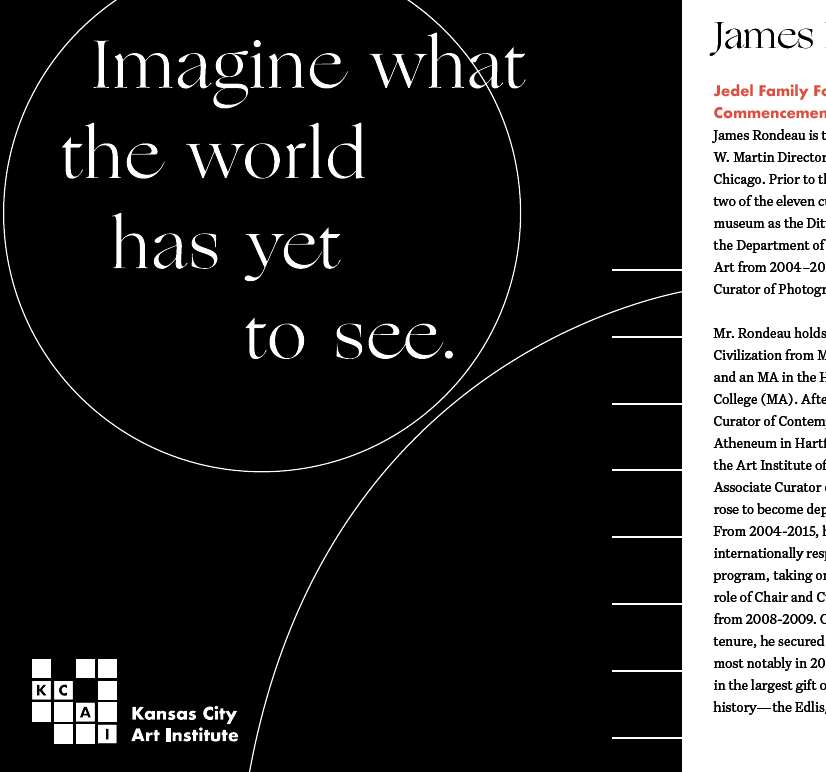
Lawn Party
With Nelson-Atkins Museum of Art
With Nelson-Atkins Museum of Art
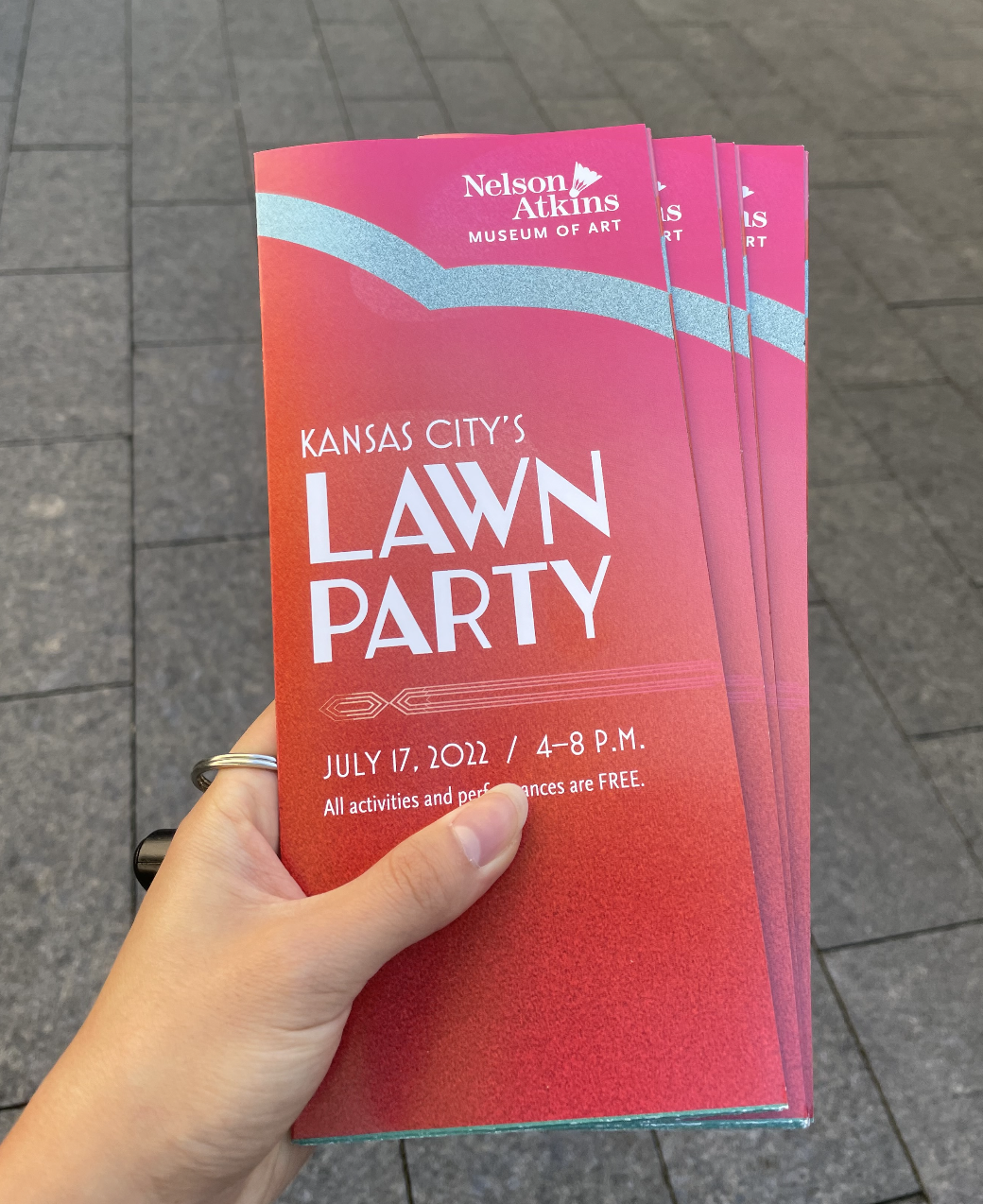
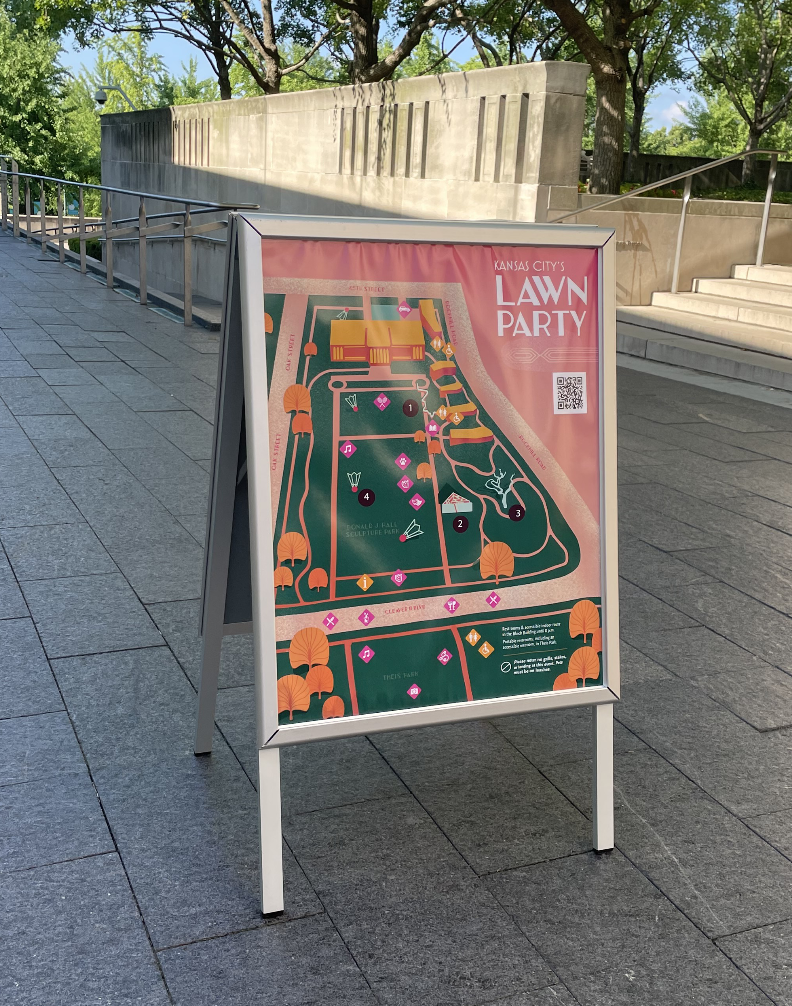
Big Picnic
With Nelson-Atkins Museum of Art
With Nelson-Atkins Museum of Art

Juneteeth 2021
With Juneteenth KC and Nelson-Atkins Museum of Art
With Juneteenth KC and Nelson-Atkins Museum of Art

Poster Series Competition
With the Folly Theater
With the Folly Theater
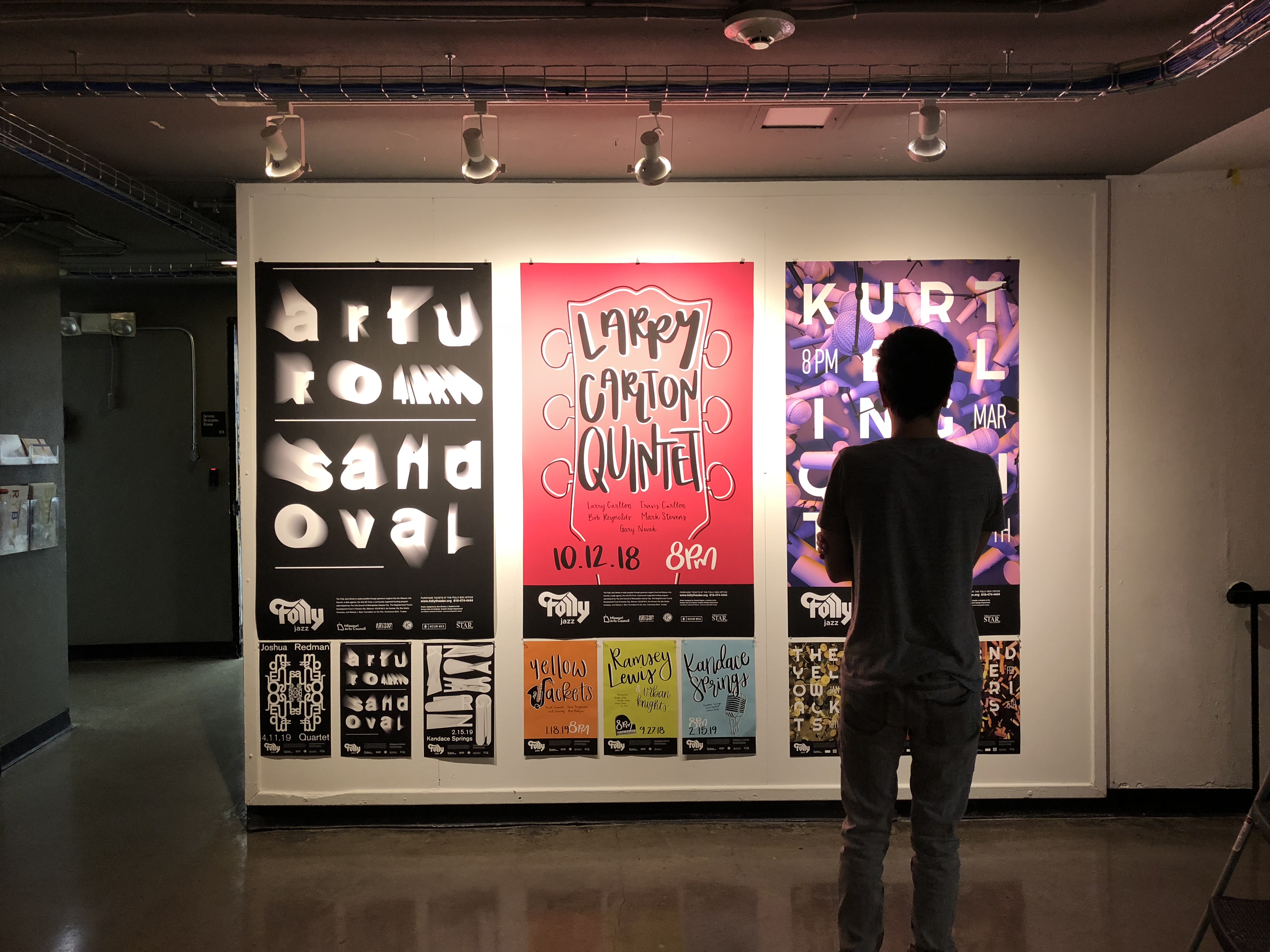


Site Visits and Guest Critics
Bauhaus Halloween, October 2019
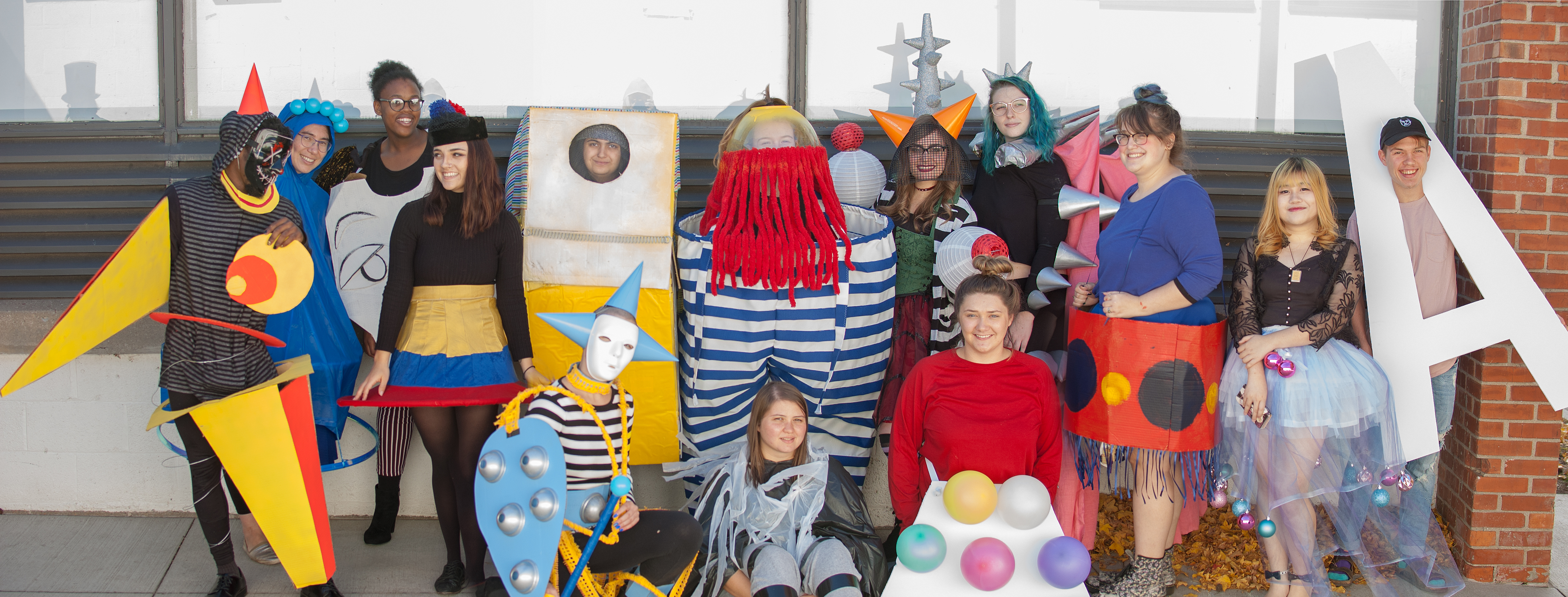
Various guest critics invited to class critiques and conversation with students

Jon Key, Current Perspectives visiting artist’s workshop in September 2019
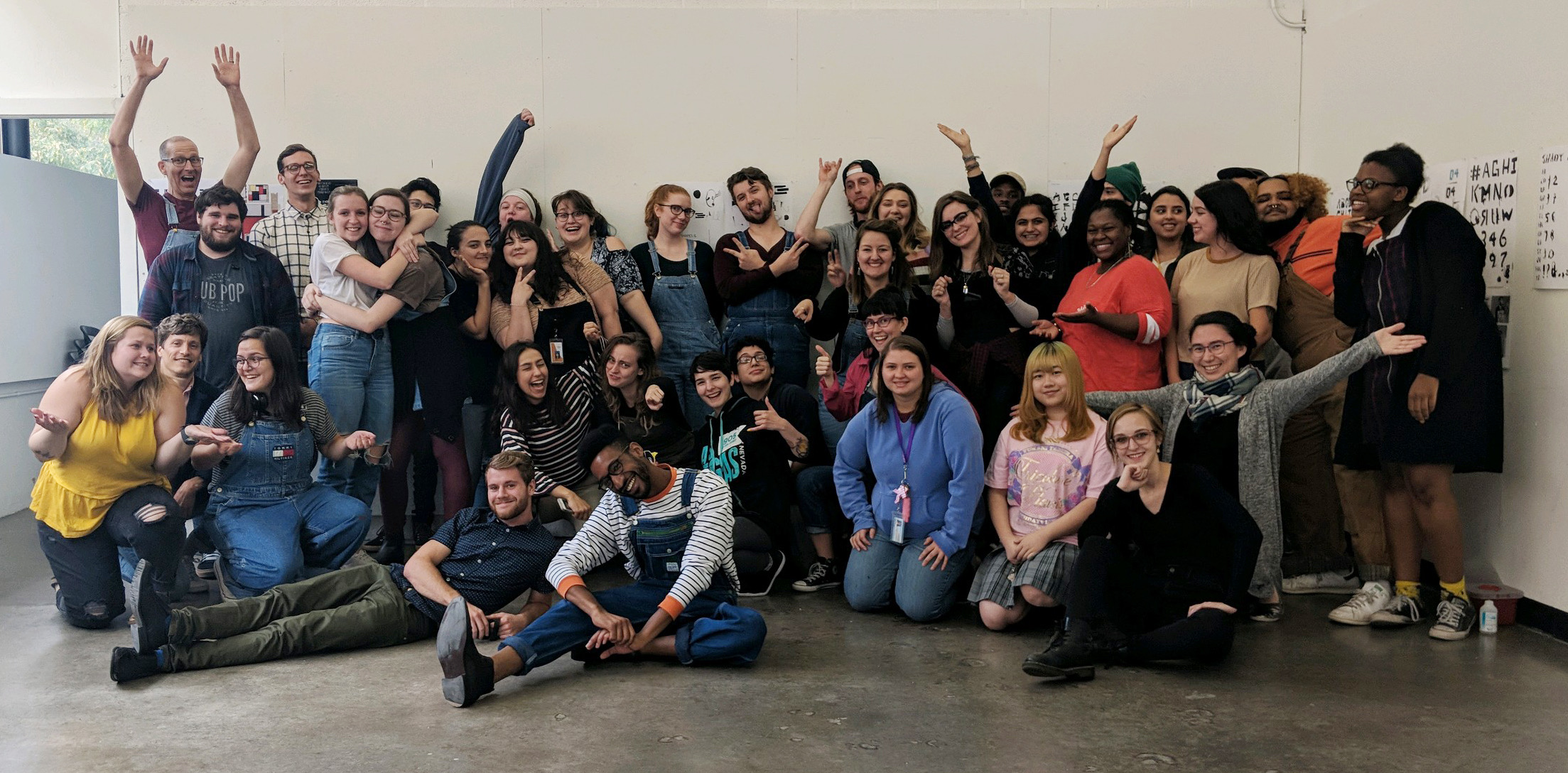
Professional Development in Teaching and Topics in Higher Education
Fellow, Academic Leadership Institute , AICAD, 2022–2023
Fellow, Artist Leadership Program, Mid-America Arts Alliance Artist Leadership Program, Fall 2022
Participant, FREEiii Workshop Project NYC/LA
Pedagogical design education workshop themed ALL ACCESS EDUCATION, 19-22 January 2021
Participant, Workshopping the “UL” of Design: Circumstantial/Situational/Conditional/Improvisational Approaches to Design Pedagogy, 2 March 2019. Pratt, Brooklyn, NY (Invited by Nida Abdullah and Denise Gonzales Crisp)
Participant, AICAD 2018 Symposium, 6–9 November 2018. Chicago, IL
Participant, ThinkTank10 Compass Points: Navigating the Landscapes of Art, Design, Mind and Body, 13–14 June 2018. University of Delaware, DE
Participant, ThinkCatalyst@FATE The Foundations Core: Evolution and Endurance, 5 April 2017. Kansas City, MO
Participant, Oklahoma Arts Conference, OK Arts Council, 26-28 October 2016. OKState.
Participant, ITLE Teaching and Learning Conference, 4–5 August 2016. Stillwater, OK
Participant, Creative Time Summit: Curriculum, 11–13 August 2015. Venice Biennale, Venice, Italy
Participant, Spaces of Learning Design Educator’s Conference (AIGA), 16–18 April 2015. York University, Toronto 2014
Participant, Facilitation: by Design (AIGA), 24–25 July 2014. School of Visual Arts Branding Studio, NYC
Participant, Extreme By Design: Design Thinking Workshop, hosted by Teachers College, Columbia University, NYC
Student, Adult Learning Certificate Program (2 of 4 courses) City University of New York School of Professional Studies (CUNY SPS), New York City NY

